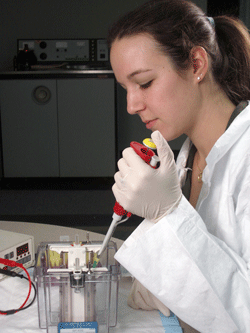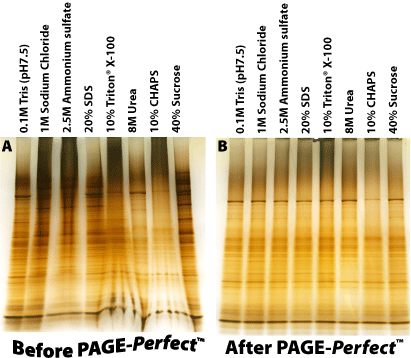Question
How can I prevent my protein samples precipitating when loading on to a polyacrylamide gel (SDS-PAGE)?
The Protein Man Says
For some proteins the denaturing of their protein by denaturants, SDS and boiling can result in protein aggregation and subsequent precipitation.
To help over come the precipitation in the gel wells, I suggest trying one of the following steps:
- Add urea to a final concentration of 8M in the sample loading buffer and incubate at room temperature. Now load.
- Use the Sample Loading Buffer (Laemmli Buffer) at a 2-5X concentration
- Try a different reducing agent, such as DTT (Dithiothreitol), 2-mercaptoethanol, or TCEP (Tris [2-carboxyethyl] phosphine).
- Do not boil the sample, instead heat to 70C for 10 minutes
- Dilute the sample before boiling to reduce the amount of protein in the sample.
- The precipitate could be due to the presence of genomic DNA. To remove the genomic DNA treat with nucleases.
- Interfering agents in the original protein sample may be causing the precipitation. Before adding the sample loading buffer, perform a clean up step. G-Biosciences PAGE-Perfect is specifically designed to remove these interfering agents and result in "publication quality" gels, by eliminating smearing and smiling (see figure)

Analysis of mouse liver lysate before and after treatment with PAGE-Perfect™. A. 10µg mouse liver lysates, in the presence of various interfering agents, were loaded onto 4-20% SDS polyacrylamide gel. B. 10µg mouse liver lysates, in the presence of various interfering agents, were treated with PAGE-Perfect™ and then loaded onto 4-20% SDS polyacrylamide gel. Both gels were stained with FASTsilver™ stain.
Do you have any tips or tricks to overcome protein loading issues?







